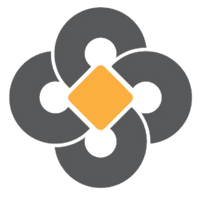Advanced Coiled Tubing Applications
April 21 @ 9:00 am - April 25 @ 2:00 pm
KD 1,950.00
INTRODUCTION
Coiled tubing (CT) has many applications within the petroleum industry, including drilling (CT drilling), cementing, well bore cleanup, oxidising, and hydraulic fracturing. In contrast, excessive frictional pressure loss, due to the relatively small tubing diameter and the curvature of the coiled tubing (which is thought to be secondary to the flow), often restricts the maximum achievable fluid injection rates. Therefore, it is of practical importance to study the flow regularity and friction properties in coiled tubing operations.
A comprehensive look at coiled tubing components, tools, and the breadth of operations possible with this technology. Participants will learn about the tools that make coiled tubing operations successful and the essential components that ensure the tubing withstands the harsh conditions of the oil and gas environment.
OBJECTIVE
By the end of this coiled tubing course, the participants will be able to:
- Plan, design, manage, and execute interventions utilising Coiled Tubing.
- Enhance operational performance during the various interventions using Coiled Tubing applications.
- Explain the recommended procedures for different Coiled Tubing field situations and applications.
- Discuss the proper pressure control system for any given situation.
- Learn about the most commonly used down hole tools and explain their properties.
- Understand how to calculate and define string limits for Coiled Tubing.
- Learn how to work safely with liquid nitrogen.
COURSE OUTLINE
Day 1
Background of Coiled Tubing Technology:
- The historical development of coiled tubing technology.
- Coiled tubing package components, operational procedures, and limitations, well control principles.
- Troubleshooting procedures.
- Hydraulic applications that involve the circulation of fluids.
- Mechanical services that involve the downhole conveyance of required tools or equipment.
- Electrical services employ down hole tools powered by or transmitted through an electrical cable.
- Completed permanent applications with coiled tubing installed either as the producing conduit or as a part of it for flow control or other requirements (e.g., ESP conveyance).
Day 2
Pumping Services in Coiled Tubing Operations:
- Fluid displacement (nitrogen lifting).
- Reservoir oil and gas well improvement (acid washing/stimulation).
- Acid washing.
- Acid stimulation (matrix acidizing).
- Fill cleanouts (sand removal/pressure jetting).
- High-pressure jetting.
- Remedial/abandonment services (sand consolidation/cementing).
- Chemical sand consolidation.
- Cementing in coiled tubing oil and gas scenarios.
Day 3
Work String Components and Services:
- Drilling/milling as a coiled tubing application.
- Under ream (within a cased hole).
- Fishing operations using coiled tubing technology.
- Coiled tubing slick line operations.
Day 4
Stiff Wire line and Coiled Tubing Integration:
- Log procedures facilitated by coiled tubing.
- Perforate in the realm of coiled tubing engineer expertise.
- Utilise down hole video cameras in coiled tubing inspections.
Day 5
Completions with Coiled Tubing Deployment:
- Manufacture and understand production and velocity strings.
- Production strings and their function.
- Injection strings – what is coiled tubing’s role?
- Implementing tubing patches.
Related Courses
| Course Title | Date | Location | Price | ||||||||||||||||
|---|---|---|---|---|---|---|---|---|---|---|---|---|---|---|---|---|---|---|---|
| Control Protection & Advanced Electrical MaintenanceElectrical Engineering Courses | 6 - 10 April, 2025 | 5 Days | Dubai, United Arab Emirates | KD 1,650.00 | Corporate SecurityOil and Gas | 13 - 17 April, 2025 | 5 Days | Dubai, United Arab Emirates | KD 1,650.00 | Corporate SecurityOil and Gas | 20 - 24 April, 2025 | 5 Days | Cairo, Egypt | KD 1,400.00 | Corporate SecurityOil and Gas | 21 - 25 April, 2025 | 5 Days | London, United Kingdom | KD 1,950.00 |
